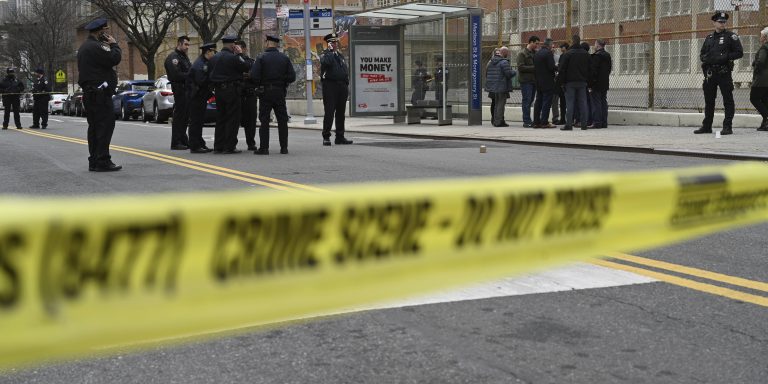INTELBRIEF
May 3, 2022
IntelBrief: Attacks Against Police and Law Enforcement Not Getting Enough Attention

Bottom Line Up Front
- In 2021, there was a 59% increase since 2020 in the number of U.S. police officers murdered on duty, with 73 officers intentionally killed.
- More than 55 police officers were killed by guns in 2021, a significant increase from previous years.
- Death by gunfire plagues American society, with 45,222 people killed in 2020 (including homicide, suicide, and accidental).
- In 2021, Americans bought 19.9 million guns; in 2020, they bought 22.8 million.
On average in 2021, an on-duty police officer was murdered every five days in the United States, with a total of 73 officers intentionally killed by perpetrators last year. This number represents a 59% increase from 2020. The total is the highest since 2001, a year that included the police officers killed in the September 11 terrorist attacks in which 72 officers were killed in a single day. Excluding 2001, 2021 saw the most intentional killings of police officers in the U.S. since 1995, when 74 officers were murdered. During an interview with CBS’ 60 Minutes that aired on April 24, 2022, FBI Director Christopher Wray said, “violence against law enforcement in this country is one of the biggest phenomena that I think doesn't get enough attention.” He went on to add that the deliberate targeting of police officers was on the rise and that “wearing the badge shouldn't make you a target.” Of the 73 officers killed, 25 were killed in “unprovoked attacks,” such as by ambush. In those cases where a political motive is suspected, the attacks spanned the ideological spectrum from far-left to far-right and raise the question of whether they should be classified as domestic terrorism.
The rise in police killings is part of an increase in murders in the U.S. in recent years. In 2020, the numbers of murders overall rose by 29%, with nearly 5,000 more people killed than in the year prior. But it was not just murders that rose but rather all deaths by guns. That same year, according to data from the Centers for Disease Control (CDC) published in the New England Journal of Medicine, 45,222 Americans died by gunfire, be it homicide, suicide, accidental, or undetermined. This is a 13.5% increase from 2019. Of these total deaths, the number of homicide gun deaths in 2020 rose a staggering 33.4% from 2019, while suicides rose 1.1% in the same time period. Guns account for the majority of murders in the U.S, not just of police officers but of all victims. And for the first time, guns are the leading cause of death for children and adolescents (from 1-19 years old), overtaking motor vehicle crashes.
While there have been many possible causes of the increase in murders, to include often vague mention of COVID-19 social impacts, the central role of guns—and the ease of access—in gun violence and gun deaths in the U.S. is too often inexplicably missing from the discussion. Only in the U.S. is it assumed that guns have little to do with gun violence and death, despite the reality that the number of guns in America has reached unprecedented levels. In 2021, Americans brought 19.9 million guns, the second-highest total ever, according to Small Arms Analytics and Forecasting. The highest total, 22.8 million, was the year prior, 2020. Both figures are on the rise at the same time as a substantial uptick in depression, anxiety, and mental health issues, as well as substance abuse, and spikes in domestic violence, especially during the pandemic.
Fears of societal unrest due to COVID-19 and concerns about legislation that will restrict access to firearms have been mentioned as possible drivers of the record increases of gun sales in the U.S. Yet, adding more guns, in part because some Americans are worried about the pandemic leading to societal anarchy, creates a feedback loop. The net result is inevitably more guns leading to more gun violence, followed by more calls for more guns to counter the rise in gun crimes. Moreover, the increase in the number of guns heightens the risks of accidents and misuse, most often associated with child-related incidents. There is no chance of new federal gun control or restrictions in the foreseeable future given political polarization, and in many of states, gun restrictions are being dismantled. States like Georgia and Texas have passed “constitutional carry” laws that abolish the requirement to obtain a permit and registration to carry a concealed firearm in public. What effect these laws have on the safety of police officers and all Americans will be seen in coming years and will likely lead this already worrying trend to continue in the foreseeable future.